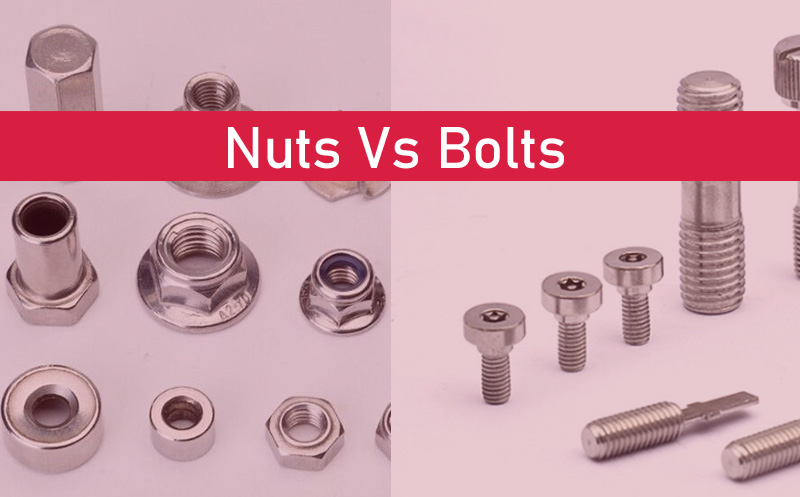Ten Creative Uses for Fasteners You Didn't Realize

Bolts and nuts are often seen as simple items used primarily in construction and maintenance, but their capabilities goes far beyond just fastening. In Allen Screws , with a bit of creativity, these ubiquitous mechanical items can be transformed into creative solutions for a wide range of DIY projects and crafts. Whether you are a experienced handyman or just beginning, understanding the many types and functions of nuts and nuts can significantly expand your capabilities and inspire new concepts.
In this article, we'll explore 10 surprising ways to use nuts and nuts that you may never have considered. From distinctive home decor to ingenious storage solutions, the options are truly endless. We will also touch on the different types of bolts and nuts available, including their substances and applications, and provide guidance into choosing the right fasteners for your specific project needs. Get ready to dive into the creative world of bolts and bolts and discover how these basic components can enhance your DIY projects.
Comprehending Fasteners and Bolts
Fasteners are crucial fasteners in numerous building and fixing tasks, serving to secure materials together tightly. A fastener is a long tubular shaft with a cap at one end and a screwed shaft, while a connector is a hexagonal or four-sided object that fits over the threaded end of the fastener. The relationship between these two components allows for tremendous stability and durability in put-together frameworks, making them essential in both robust construction and routine applications.

Nuts come in various forms, including standard nuts, lock nuts, and flange nuts, each crafted for specific uses. For instance, lock nuts avoid loosening under shaking, while flange nuts provide a larger bearing surface to distribute the load more uniformly. On the other hand, bolts also come in various types such as hex bolts, carriage bolts, and lag bolts, each appropriate for specific materials and jobs. Comprehending the specific qualities of these fasteners is essential for picking the appropriate parts for your requirements.
When dealing on any endeavor, picking the appropriate nut and bolt pairing is key for securing reliability and security. Factors such as the substance of the workpieces, the weight they will hold, and exposure to surrounding factors must be factored in. By grasping the fundamentals of nuts, bolts, and their various types, you can make informed determinations that boost the results of your DIY initiatives or professional pursuits.
Types and Applications
When you consider nuts and bolts, understanding the various types and their individual uses is essential for picking the suitable fastener for your task. Typical types of bolts include hexagonal bolts, carriage bolts, and lag screws. Hex bolts are adaptable and commonly used in construction projects due to their durability and capacity to bear heavy loads. Carriage fasteners, characterized by their rounded heads, are often employed in wood-to-wood applications, such as the assembly of furniture, while lag screws provide superior holding power for heavy wooden structures.
Nut fasteners also come in different styles, each with distinct purposes. Standard nuts are often used with bolts, whereas locking nuts use a distinct design to prevent loosening due to vibrations, making them ideal for use in automotive and machinery settings. Flange nuts have a built-in washer for improved load distribution, which is particularly useful in securing parts that face elevated stress. Grasping these distinctions ensures a more efficient assembly in everything from do-it-yourself projects to commercial building projects.
Alongside building and assembling, bolts and nuts play integral roles in specialized uses. For instance, anchoring bolts are necessary in securing structures to concrete, making them a necessity in foundation work. Tamper-resistant and specialty fasteners are increasingly used in security-focused applications, providing additional safety measures in areas like infrastructure projects and high-risk settings. By knowing the particular applications of various nuts and bolts, you can guarantee your undertakings are not only effective but safe and durable.
Acquiring and Measuring Fasteners
When it comes to purchasing nuts and bolts, understanding what you need is vital. First, ascertain the specific use you have in mind. Whether you are engaged on a DIY assignment at home or a professional construction job, determining the required strength and material kind is critical. Consider factors such as whether you need corrosion resistance, as this can influence your choice between SS, zinc-coated, or galvanized options.
Assessing fasteners correctly is a critical step in ensuring appropriateness. Start by determining the diameter of the bolt or nut, using either a caliper or a measuring tape. It’s also necessary to consider the thread pitch, which is the distance between the threads. For metric measurements, this is determined in millimeters, whereas imperial fasteners are measured in threads per inch. Grasping these specifications will help you find the right fastener that fits well in your task.
Lastly, remember that the finish and grade of the fasteners are just as crucial as their size. Various projects may require different grades of bolts to match strength specifications, especially in heavy-duty applications. Don’t disregard quality; choosing well-made fasteners can save you effort and time in the long run. Always check a buying guide to determine the right choices based on your requirements and local supply.
